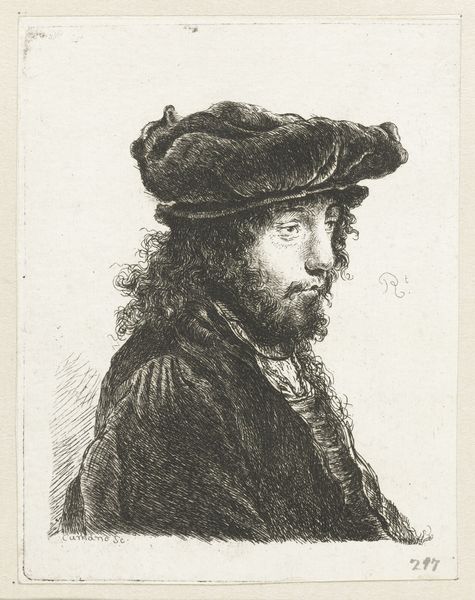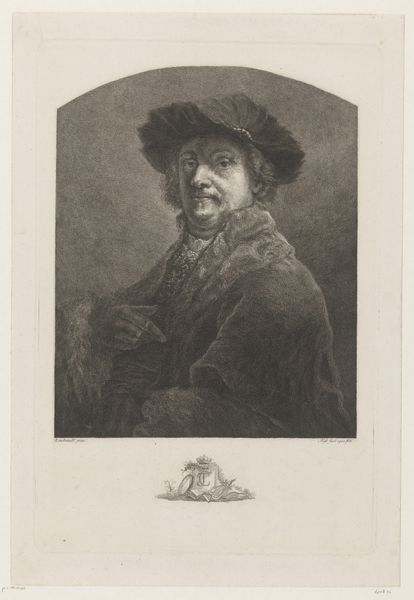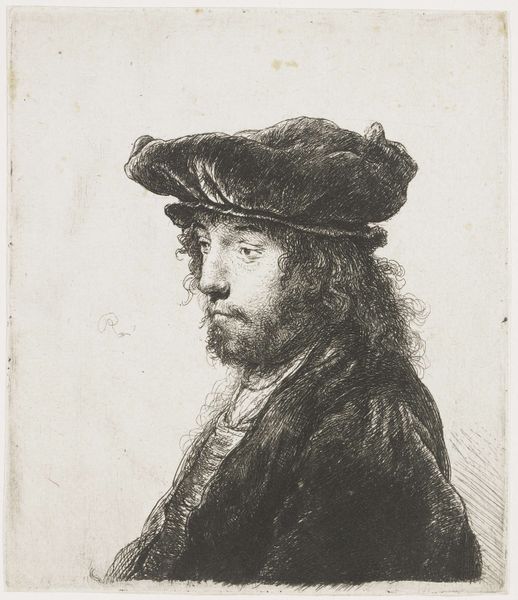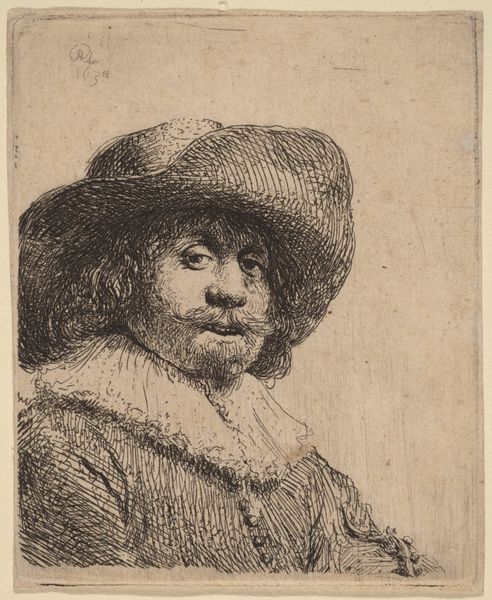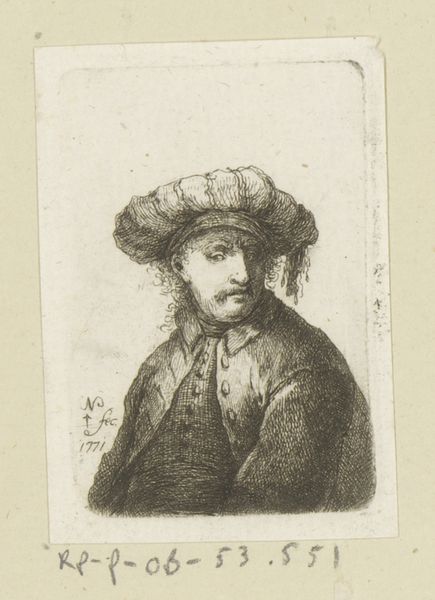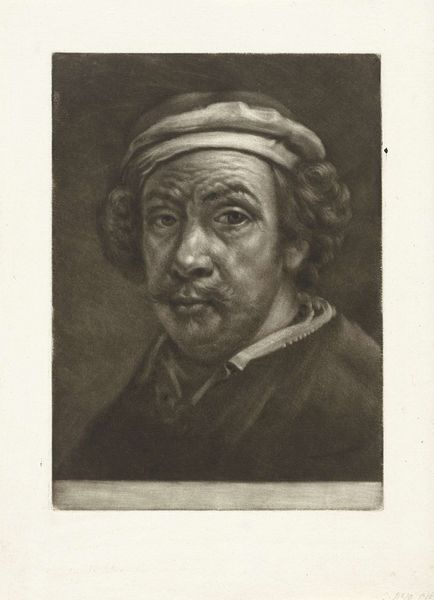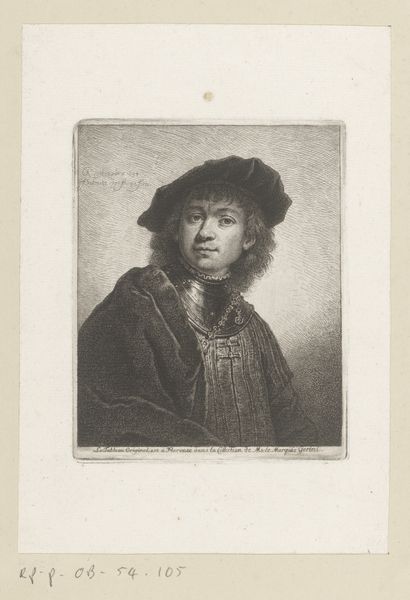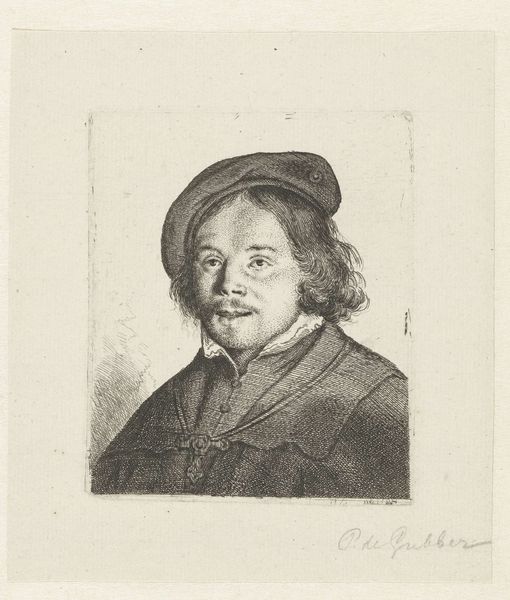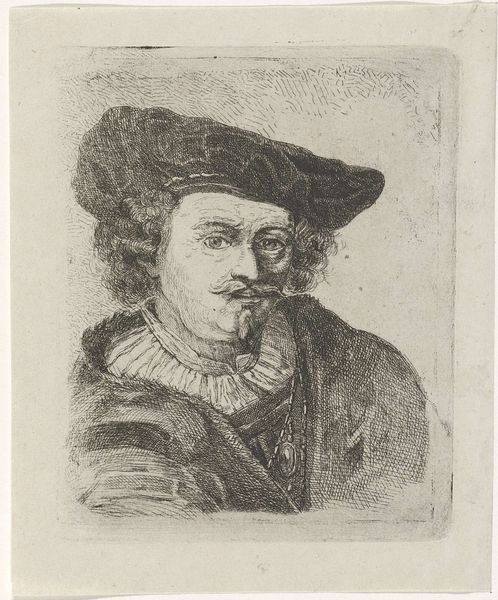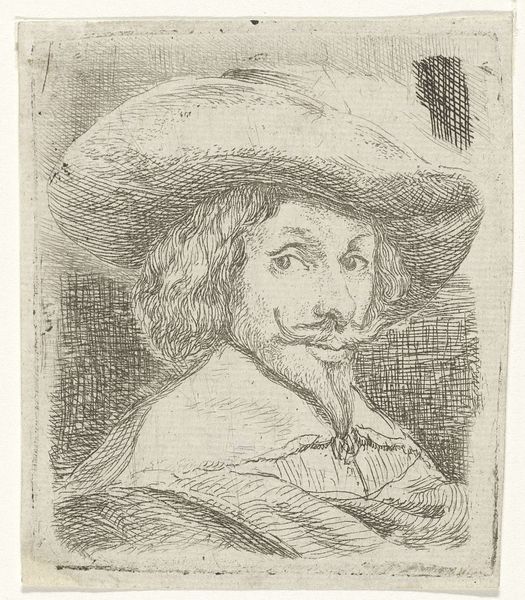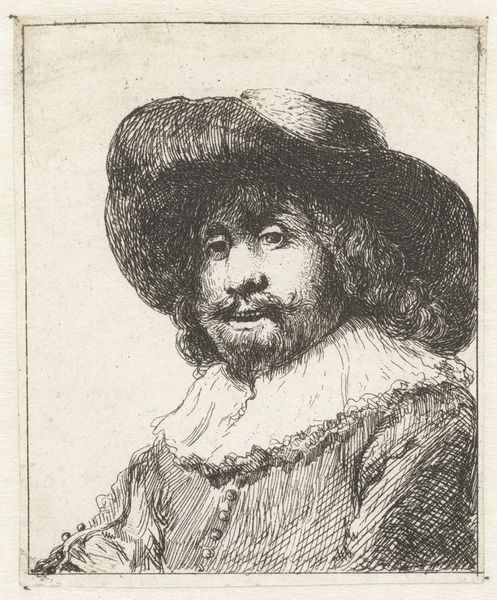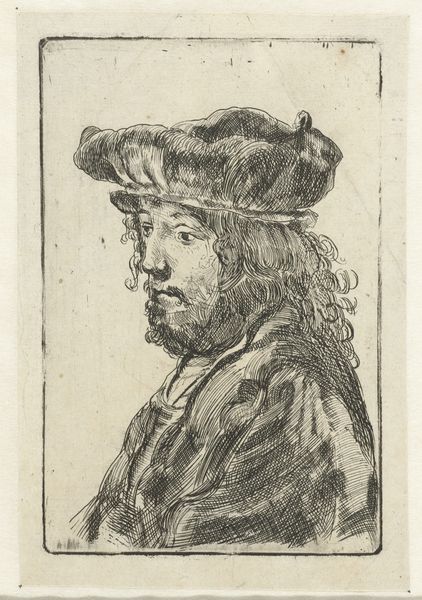
Self-portrait in a cap and scarf with the face dark: bust 1710 - 1766
0:00
0:00
thomasworlidge
Rijksmuseum
drawing, paper, ink
#
portrait
#
drawing
#
self-portrait
#
baroque
#
figuration
#
paper
#
ink
Dimensions: height 124 mm, width 98 mm
Copyright: Rijks Museum: Open Domain
Curator: Here we have Thomas Worlidge's "Self-portrait in a cap and scarf with the face dark: bust", dating sometime between 1710 and 1766. It's currently housed here at the Rijksmuseum. Editor: Immediately, I'm struck by how... provisional it feels. The scratchy, almost frantic quality of the line work gives it this feeling of immediacy, like we've caught Worlidge in a fleeting moment of self-reflection. Curator: Yes, the piece is certainly rich in textures. The contrasting values across the paper – the artist renders both a visual and affective mood. Observe the subtle gradations achieved using only ink on paper, almost monochrome in essence. Notice how this distribution creates formal unity. Editor: It's fascinating to consider the actual labour involved in a piece like this. Think of the time, the skill in manipulating the ink and paper to create that specific kind of chiaroscuro. Was he grinding his own ink, selecting specific paper, iterating in a certain technique? How did those material choices and limitations affect his self-expression, his very identity? Curator: Those gradations create depth, yes. Notice the sharp focus on the face against the relatively unrefined sketch quality given to his torso. I'm particularly taken by the gaze. It meets the viewer, certainly, but doesn’t reveal. This, within the genre of self-portraiture, indicates, at minimum, ambivalence about its accessibility to the viewer. Editor: It's precisely this contrast between the face and the torso which is captivating, yes. It asks me to consider how artistic labor – whether through drawing, printing, or even preparing materials – is imbricated with that expression. What stories do those choices tell? What class expectations might have pushed the artist to render materials as quickly as possible to earn revenue by producing copies of old masters? It allows to really dig into the political context of art. Curator: An intriguing proposition! Thank you for illuminating these other vital considerations and opening alternate, though still grounded, viewpoints, with relation to the labor undertaken, the choice of media, and Worlidge’s visual legacy. Editor: My pleasure, as always. It just emphasizes how every artwork embodies social relationships.
Comments
No comments
Be the first to comment and join the conversation on the ultimate creative platform.
